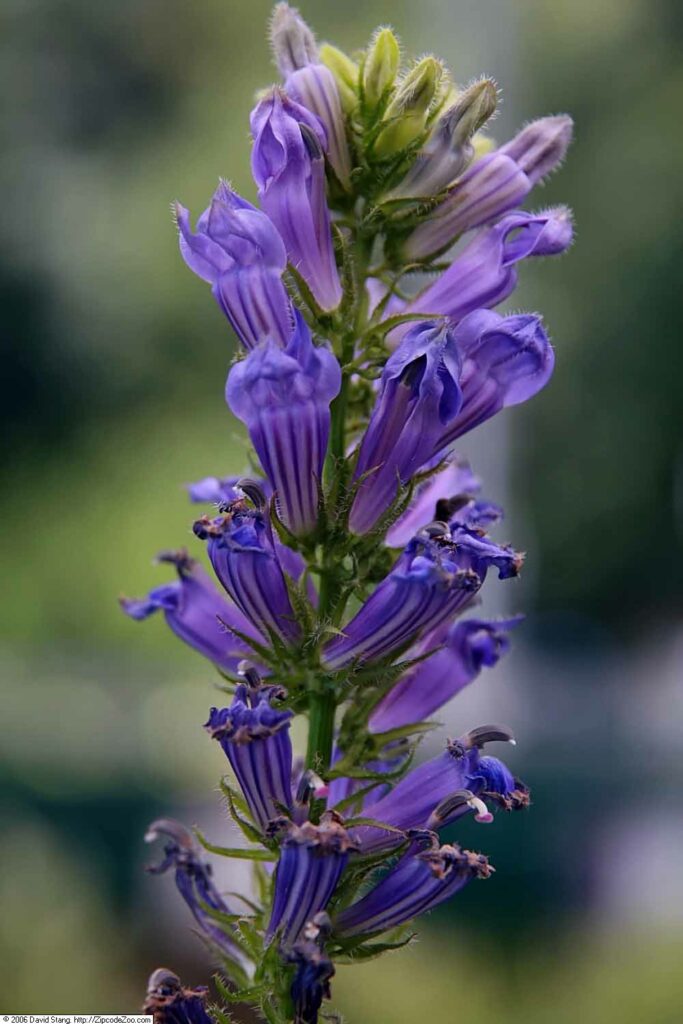A couple years ago I took a trip to an arboretum in one of the most deer-dense areas in New Jersey with wildlife biologist and owner of Deer Guys®, Chris Markham. We noticed a complete decimation of the understory due to deer damage. Dozens of the plant species eaten were listed as “deer-resistant”. There was, however, one species of flower spread beautifully throughout the arboretum completely untouched by deer. It was so impactful on the landscape it inspired me to write this blog post. This flower was Great Blue Lobelia.
Also known as the Blue Cardinal Flower, this perennial wildflower is native to the United States and Canada. It has a long-lasting bloom beginning mid-late summer and is an EXCELLENT pollinator attractant. At the time of our visit at the arboretum, this flower was covered in a diversity of butterflies, bees, and moths. The flower is toxic for consumption, containing alkaloids and volatile oils that discourage deer from eating it. It is a great flower for rain gardens as it thrives in rich, wet soils. It can survive in full sun if kept wet, but will also tolerate a moderate amount of shade.
This low maintenance, adaptable native flower will add a punch of color to your deer-resistant garden. You’ll get the best bang for your buck planting it in the ideal conditions described above as it is known to self-seed and grow in colonies. As with any plant, deer-resistant does not mean deer-proof. That being said, planting resistant plants in conjunction with other management practices such as repellents and fencing will give you the best chance in preventing excessive deer damage on your landscape.
Editor’s Note: R.J. Curcio is a Certified Associate Ecologist of the Ecological Society of America and general manager of Deer Guys®. For more information on Deer Guys® visit www.DeerGuysUSA.com

Protecting landscapes since 2002!
Long Island’s Deer Repellent Specialists®.